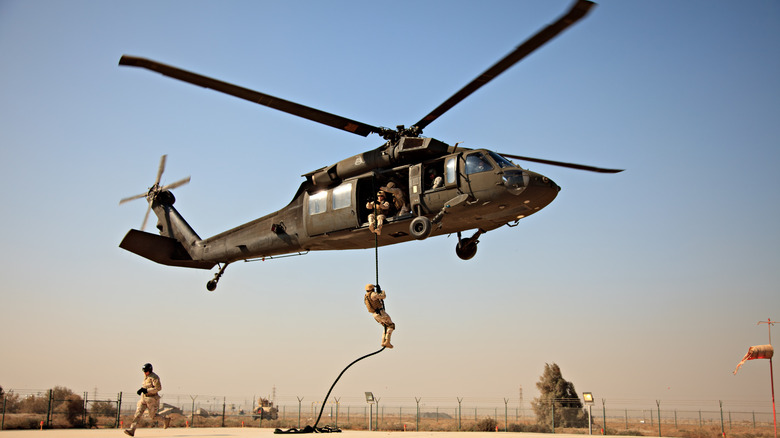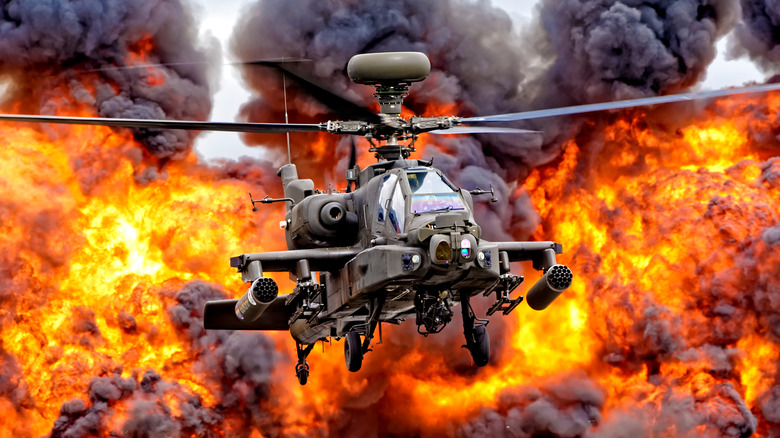How U.S. Military Helicopters Received Their Native American Names
When considering United States military helicopters, names like Apache and Black Hawk probably come to mind first. Over the years, Hollywood has done an excellent job of bringing us aerial action involving these two particular helos, such as the Ridley Scott-directed film, "Black Hawk Down," based on an actual military incident that occurred in October 1993 when two Black Hawk helicopters were shot down while dropping American troops into Mogadishu.
Apache and Black Hawk may also sound familiar because they are names of Native American tribes. While these two may be the best-known choppers in the U.S. armed forces, the fact is that at one time, it was a regulation that all were to be named after one of these tribes.
That naming convention dates back to 1941 when the Army Air Corps was renamed the Army Air Forces. The technology and use of combat aircraft were evolving, and it was decided that an independent command structure was needed to oversee their operations better.
The naming convention for the Army Air Corps remained in place until 1947 when the Army and Air Force were broken into two distinct military branches. Before the split, though, Army Gen. Hamilton Howze was tasked with defining how resources would be used to help support ground troops.
The first two helicopters the Army Air Corps employed were Hoverfly and Dragonfly. Howze was not enamored with those designations and devised a different process.
Get to the choppa!
Helicopters were nimble and could drop in on an unsuspecting enemy, similar to the guerilla-style tactics deployed by Great Plains tribes during the American-Indian Wars fought throughout the 1800s. So Howze decided the next helicopter would bear the name of the Sioux to honor of those Native Americans who defeated the 7th Calvary Regiment led by General George Custer at the Battle of Little Bighorn in 1876.
That led to the naming og the H-13 Sioux, made famous by the TV show, "M.A.S.H."
In 1969, Army Regulation 70-28 was created to give names to military equipment. Each name had to met five requirements: it had to be creative but respectful, project confidence, accurately describe the item's attributes, espouse its tactical value, and epitomize the subject for which it was named if for a person or group. Furthermore, the regulation specifically required aircraft to be named using "Indian terms and names of American Indian tribes and chiefs."
The Bureau of Indian Affairs provided the names. Although that regulation has since lapsed, the military still has a number of aircraft that adhere to this naming convention. Additionally, since 1875 as many as 32 Native Americans have earned the Medal of Honor during the Indian Wars, World War II, and the Korean War.

